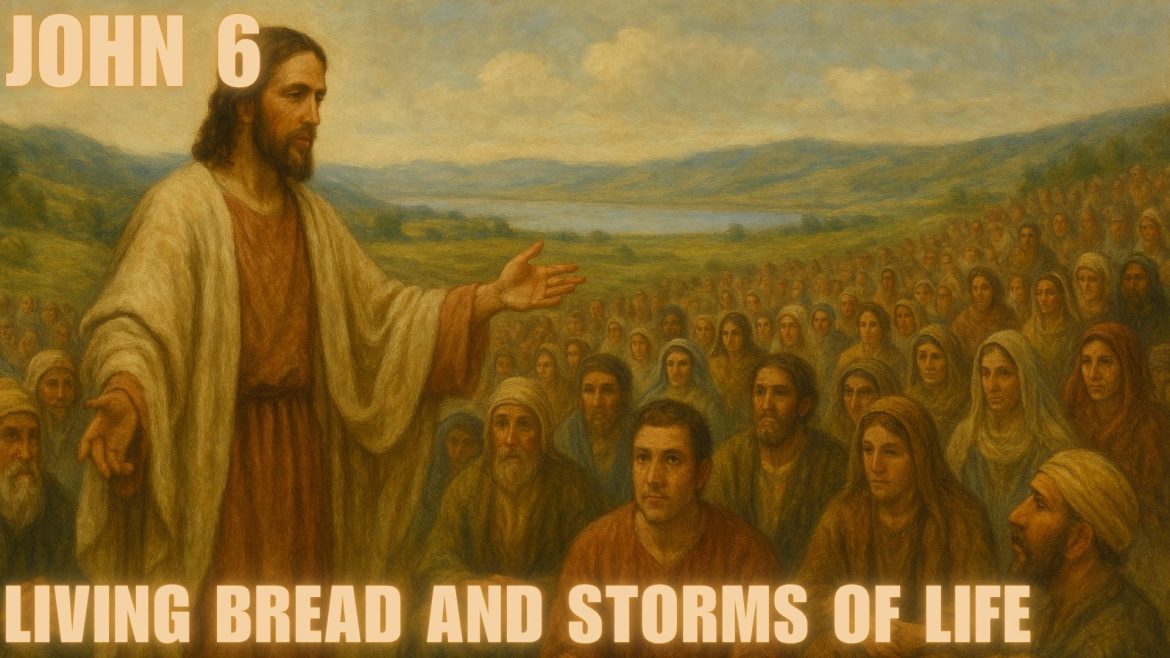In John 6, we see one of the most profound and multifaceted chapters of the New Testament, where Jesus is depicted as the “bread of life.” This chapter encapsulates key aspects of Jesus’ ministry, his miracles, and his teachings about spiritual nourishment and eternal life.
The Miracle of Feeding the 5000
The chapter begins with the familiar miracle of Jesus feeding 5000 people with five barley loaves and two fish. This event, significant for being the only miracle recorded in all four Gospels, demonstrates Jesus’ compassion and divine provision. It was a moment of physical sustenance that pointed to a deeper spiritual truth.
When Jesus asked Philip where to buy bread for the crowd, it was a test of faith. Philip’s practical response highlighted the impossibility from a human perspective, setting the stage for Jesus to reveal his divine power. By multiplying the loaves and fish, Jesus provided abundantly, leaving no doubt about his miraculous abilities and emphasizing the importance of trusting in God’s provision.
Jesus Walks on Water
Following the miracle of the loaves, Jesus further demonstrates his divinity by walking on water. This miracle not only showcases his mastery over the natural world but also serves as a powerful metaphor for faith and trust. When the disciples saw Jesus approaching their boat, they were terrified, thinking he was a ghost. Jesus reassured them, saying, “It is I; do not be afraid.” This statement, “I am,” is a direct reference to God’s name revealed to Moses, further asserting Jesus’ divine identity.
The Bread of Life Discourse
The heart of John 6 is the “Bread of Life” discourse. After the crowd sought Jesus for more miracles, he redirected their focus from physical food to spiritual nourishment. Jesus declared, “I am the bread of life; whoever comes to me shall not hunger, and whoever believes in me shall never thirst.” Here, Jesus emphasized that believing in him is the key to eternal life. We see another “I am” statement.
This teaching was challenging for many. Jesus explained that just as God provided manna to the Israelites in the wilderness, he now offers true bread from heaven. This bread, which is his flesh given for the life of the world, signifies the ultimate sacrifice he would make on the cross. The discourse underscores the necessity of faith and the acceptance of Jesus’ sacrificial death for salvation.
Reactions and Reflections
The reactions to Jesus’ teachings were mixed. Many found his words hard to accept and chose to walk away. Yet, the core group of disciples, led by Peter, affirmed their belief in Jesus, recognizing him as the Holy One of God. This division highlights the difficulty and the depth of Jesus’ message, which calls for a shift from worldly to spiritual thinking.
Conclusion
John 6 invites readers to contemplate the profound truth of Jesus as the source of spiritual sustenance and eternal life. It challenges us to move beyond our immediate physical needs and embrace the deeper, sustaining power of faith in Christ. Understanding Jesus as the bread of life encourages us to seek a closer, more nourishing relationship with him, continually feeding our spirits with his teachings and presence.

